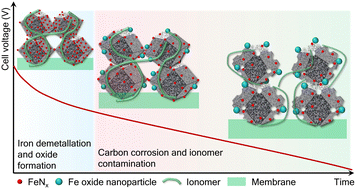2023-08-10 米国国立標準技術研究所(NIST)
◆CAVSは、冷たいガス(リチウムまたはルビジウムの約10万個の原子)を磁場中に捕捉し、これを用いて真空圧を測定します。この新技術は、従来の圧力計と同等の精度で動作し、将来のチップ製造や次世代科学で必要とされる極めて低い真空圧(地球の海面大気圧の兆分の1以下)を測定できます。また、量子物理学の原理に基づいており、他の参照圧力源や技術への調整やキャリブレーションは不要です。
◆この技術は、半導体製造だけでなく、量子コンピューターや重力波検出器、粒子加速器など、高真空環境を必要とする他の用途にも有用です。
<関連情報>
- https://www.nist.gov/news-events/news/2023/08/nist-demonstrates-new-primary-standard-measuring-ultralow-pressures
- https://pubs.aip.org/avs/aqs/article/5/3/035001/2905161/Accurate-measurement-of-the-loss-rate-of-cold
背景ガスの衝突による冷原子の損失率を正確に測定し、量子ベースの冷原子真空標準を目指す
Accurate measurement of the loss rate of cold atoms due to background gas collisions for the quantum-based cold atom vacuum standard
Daniel S. Barker,James A. Fedchak,Jacek Kłos,Julia Scherschligt,Abrar A. Sheikh,Eite Tiesinga,Stephen P. Eckel
AVS Quantum Science Published:August 01 2023
DOI:https://doi.org/10.1116/5.0147686

We present the measurements of thermalized collisional rate coefficients for ultra-cold 7Li and 87Rb colliding with room-temperature He, Ne, N2, Ar, Kr, and Xe. In our experiments, a combined flowmeter and dynamic expansion system, a vacuum metrology standard, is used to set a known number density for the room-temperature background gas in the vicinity of the magnetically trapped 7Li or 87Rb clouds. Each collision with a background atom or molecule removes a 7Li or 87Rb atom from its trap, and the change in the atom loss rate with background gas density is used to determine the thermalized loss rate coefficients with fractional standard uncertainties better than 1.6% for 7Li and 2.7% for 87Rb. We find consistency—a degree of equivalence of less than one—between the measurements and recent quantum-scattering calculations of the loss rate coefficients [Kłos and Tiesinga, J. Chem. Phys. 158, 014308 (2023)], with the exception of the loss rate coefficient for both 7Li and 87Rb colliding with Ar. Nevertheless, the agreement between theory and experiment for all other studied systems provides validation that a quantum-based measurement of vacuum pressure using cold atoms also serves as a primary standard for vacuum pressure, which we refer to as the cold-atom vacuum standard.



